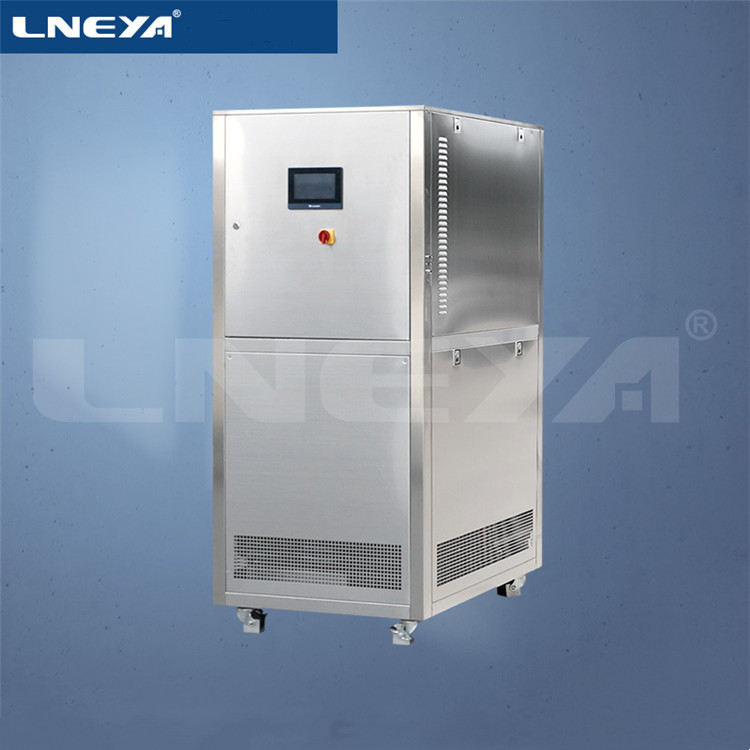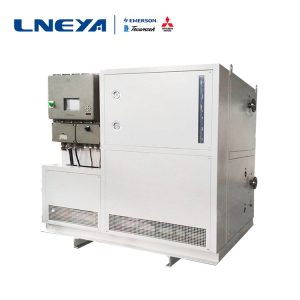What are the applications of steam circulators in chemical industry?
The steam circulator in the chemical industry is a temperature control equipment in the pharmaceutical and chemical industry. When users operate, they need to understand the performance and maintenance knowledge in order to operate the equipment effectively.

1. It can be heated and cooled quickly, can move up and down continuously, and has a wide temperature control range. It does not need to replace the heat transfer medium in the whole process, and reduces the consumption of heat transfer medium. If the industrial cooling and heating engine fails, please find the correct reason and use appropriate methods to solve the problem.
2. The equipment management personnel shall be familiar with the performance and operation steps of the equipment in charge, and properly keep the technical data and operation instructions. Be familiar with the operating instructions before use. Check the protective device as required, and control the ambient temperature, humidity and continuous working time.
3. Regularly check the use record of the instrument to ensure that the account matches the object. Conduct power on inspection. If fire, smoke, explosion or odor are found, please shut down immediately and report to the supervisor to prevent damage to the instrument due to short circuit and prolong the service life of the instrument.
4. Regular maintenance, timely eliminate instrument faults, make maintenance records, and be checked by equipment professionals. If external maintenance is required, the application shall be submitted to the equipment.
5. The liquid circulation of the whole system is closed. The system is equipped with an expansion container. The expansion container and the liquid circulation system are insulated and do not participate in the liquid circulation. They are only mechanically connected. Regardless of the temperature of the circulating liquid, the medium in the expansion container always maintains room temperature.
Steam circulator in chemical industry refers to a circulating device that provides heat and cold sources for reactors, tanks, etc., and laboratory instruments and equipment with dual functions of heating and cooling. The heat conducting medium circulates in a closed circulating system to heat or cool the required objects. Mainly used in chemical, pharmaceutical and biological fields, supporting glass reactors, rotary evaporators, fermentation tanks, calorimeters; It is widely used in petroleum, metallurgy, medicine, biochemistry, physical properties, testing, chemical synthesis and other research departments, colleges and universities, factory laboratories and Metrology and quality inspection departments.
Recommandations connexes
-
How to Solve the Problem of Water Supply in Low Temperature chiller system
1031Due to the improper operation of low temperature chiller system, there is the possibility of water entering into refrigerant system. Therefore, in view of the problem of water supply in low temperature chiller system, process guidance is formulat...
Voir les détails -
-45 °C freezer manufacturers analyze compressor burnout detection and repair methods
962In the -45 ° C freezer, the compressor is one of the more important components, the manufacturer Wuxi Guanya (LNEYA) tells everyone that once the compressor fails, it needs timely inspection and maintenance, then how to check the work and maintena...
Voir les détails -
Application and advantages of new energy automotive motor test equipment
1028LNEYA's new energy motor test equipment is used in HEV (Hybrid Electric Vehicle), BEV (Electric Vehicle), Hydrogen Power Vehicle, Fuel Cell Electric Vehicle, EREV (Extended Range Electric Vehicle) and other new energy vehicles. LNEYA's equipment a...
Voir les détails -
Maintenance Method of Condenser in Water Chiller Units
1118Air-cooled condenser is mainly used in air-cooled water chillers. It uses air as cooling medium. Because there are often dust or other sundries in the air, some of these dust or sundries will fall on the outside surface of the condenser fins. Over...
Voir les détails
 LNEYA Industrial Chillers Fabricant Fournisseur
LNEYA Industrial Chillers Fabricant Fournisseur












